It's no doubt that modern customers rely more and more on search engines to find everything, from daily items like clothes or electronics to software providers. Regardless of what your business is selling, your potential prospects are searching for products or services like yours on popular search engines. And with over 5 billion searches a day, Google is considered an SEO goal for any business.
But doing SEO for a typical website is far more simple than an eCommerce site with hundreds or even thousands of product listings. This post gives you a set of best SEO practices to upgrade your site's performance to an optimum level.
How to Get Your Magento Shop to Rank High on Google:
Install the latest version of the Magento 2 platform
Optimize image size and format
Optimize ALT tags and image file names
Focus on long-tail keywords and long-form content
Write unique product descriptions
Optimize the meta tags for product detail pages
Maintain out-of-stock product page
Implement schema markup (rich snippet)
Choose the right hosting provider
Use Content Delivery Network (CDN)
Merge and minify JavaScript and CSS files
Other essential SEO techniques
Install the latest version of the Magento 2 platform
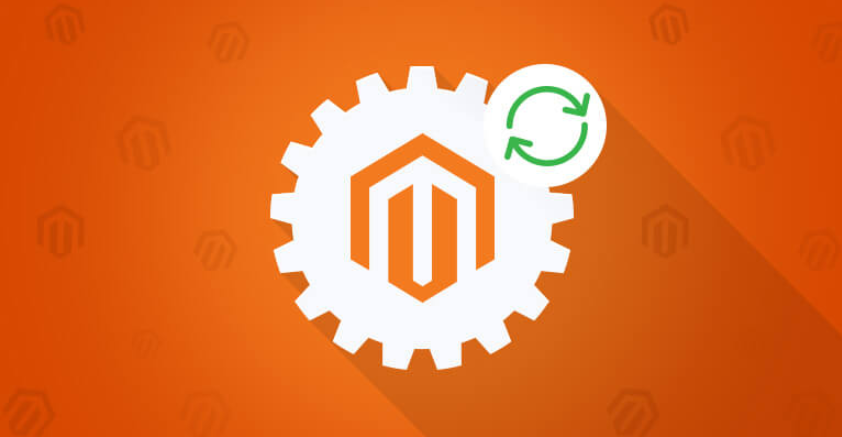
The first step to getting a high rank on a search engine is to ensure your website is updated to the latest Magento version.
New releases always go with newly upgraded or advanced features that support the e-store's SEO performance, significantly affecting your site's rank in search engines.
Most importantly, upgrading to the latest version of Magento 2 means that you have access to new functionalities, enhanced not only SEO capabilities but also numerous built-in security options, bug fixes, and so forth.
Image optimization
One of the Magento 2 SEO best practices is to optimize images displayed on the Magento 2 store. The truth is that lots of merchants just upload product images to their storefront thoughtlessly without knowing how much harm this action can cause to their ranks on search engines.
This carelessness can increase the loading time and harm the on-site user experience, leading directly to low conversion rates. There are numerous aspects to image optimization influencing a site's SEO performance. This section will point out the essential factors that are typically used in the ranking algorithms of most search engines.
Optimize image size and format
First of all, the size and weight of any image within your site significantly affects the loading speed since these images take up a lot of bandwidth.
Modern consumers have become less patient than ever. Usually, most eCommerce shoppers won't wait any longer than 4 seconds for a page to load. For sure, online shoppers leave a site with no hesitation when this waiting time is too long.
In addition to the human experience, Google and other search engines will prioritize displaying and placing the site with appropriate image sizes and weights on top ranks on the search results page.
Reminders for merchants when optimizing image size and format:
- Use external picture editor tools to compress or resize the uploaded images (i.e., JPEG & PNG Stripper, Img2go, Online Image Optimizer, and many more).
- Stick to standard image formats like JPG, PNG, and GIF. However, in terms of small size and display quality, we recommend you choose the PNG format for images displayed on the website.
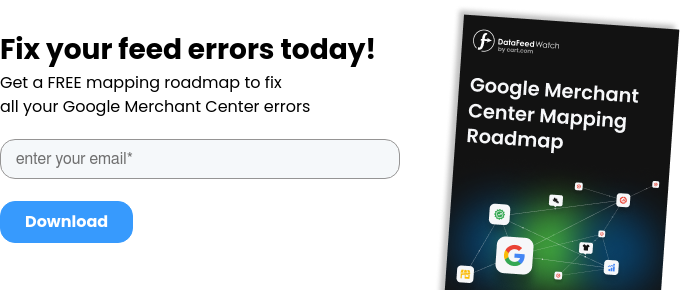
Optimize ALT tags and image file names
Neither Google, or any other search engine, is smart enough to define exactly what your images contain. Furthermore, when a customer's browser doesn't display a particular image for any reason, the alt tags with text will be what they will see.
The more findable your image names are, the higher the chance of your site appearing on customers' search result page is. Google will rank your site's product higher if it can read and recognize the image title and alt tags.
So, advice for alt tags best for SEO will be:
- Ensure each displayed image has proper alt texts or alt attributes
- The name set for the image file should describe what the image's about clearly and informatively, not just with meaningless phrases
- Make the image name descriptive and findable for your potential customers
- Add your keyword in the alt text with a reasonable dose to help the images rank in a higher position on the search results pages
- The alt text for images should be around 125 characters
Therefore, setting alt tags for all your images will ensure both search engines and visitors get the correct information of the images uploaded on the site.
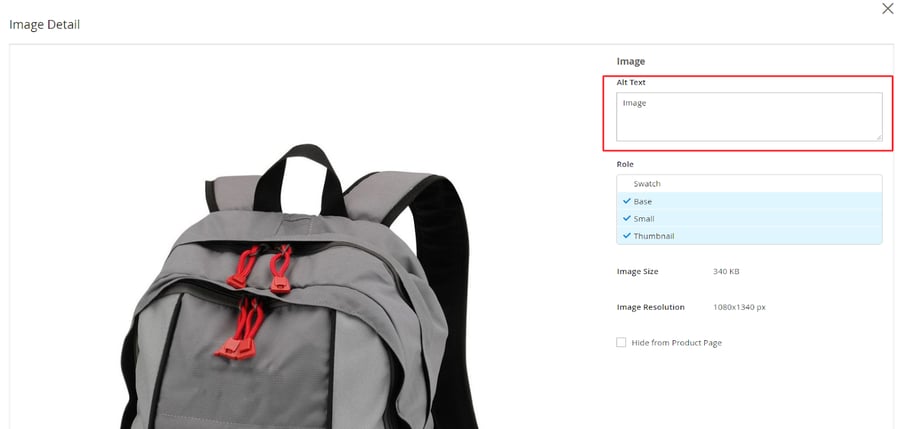
To add alt text for an item's image in Magento 2, you should:
- Open Products > Catalog. On the Product grid, click on the item you want to update.
- Click on the Images and Videos section. After that, double click on the product images to open the Image Detail slide.
- Here you can see a block where you can add or update the image Alt Text.
Magento 2 SEO Content
Avoid duplicate content
First, like its name, duplicate content refers to the similarity of content on multiple pages within a website or among others. This causes problems for search engine robots. When Google crawls your sites, they notice when content is identical.
Duplicate content is extremely harmful to SEO for 2 reasons:
- The search engine robots will be confused when choosing the right content (among numerous versions of that content) to index as well as show in the search results
- It's difficult for search engines to consolidate link metrics for the content
The SEO performance and ranks for all versions of duplicate content will be seriously affected, especially when other sites link to more than one version of that content.
The best way to deal with duplicate content is to use Canonical tags and the Robots.txt file. With the Robots.txt file, you can prevent the search engine bot from crawling disallowed pages on your eCommerce site. To set the Robots.txt in Magento 2, you need to:
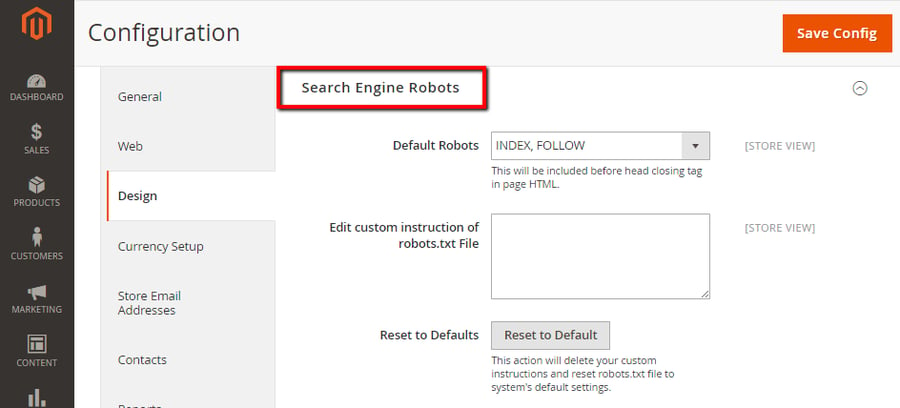
- Go to Stores > General Design > Edit custom instruction of robot.txt
- Write down the pages that need to be avoided completely here
- Click Save Config to finish the setting process
Magento uses canonical tags to mark your site as a "preferred" page when there is more than one page with the same content. Therefore, merchants can avoid unwanted negative effects of duplicate content. To use this feature, you need to open the Admin Panel, then:

- In the sidebar, choose Admin > Stores > Settings > Configuration > Catalog
- Scroll down and click on the SEO section
- On the SEO dropdown, set Use Canonical Link Meta Tag for Categories/ Products = Yes
Focus on long-tail keywords and long-form content
Lots of online merchants have the wrong assumption about the content used for different products and categories. You might think that the product descriptions for eCommerce sites need to be crisp, short, and easy to understand.
This can work with those who prefer searching for short keywords, but has no benefit in raising your rankings on customer search result pages. The truth is, long-tail keywords and long-form content is always better than sites with short-form content.
The long-form content can exist on your site in the form of:
- Company blog posts that up date the latest news which your target customers are interested in and likely to search on the Internet.
- Detailed guides or instructions about a specific topic related to your brand's offerings (products or services) that help customers have the best user experience.
It's vital to focus on long-tail keywords and phrases that your potential customers will search for to differentiate your content from others. Most importantly, it give your site a better ranking on Google's search result page.
Write unique product descriptions
One element that online merchants usually forget to rank high for on the SERP is product descriptions. Owning hundreds, or even thousands, of items in the same categories can be quite daunting for sellers when trying to generate unique descriptions for each product.
As a result, many eCommerce businesses use the same content for multiple items with similar functionalities. Or, they simply copy the manufacturer's product descriptions (in cases when they are dropshipping businesses).
Search engines consider this as duplicate content. In addition to your website being ranked down, Google might not index your site in the first place.
Optimize the meta tags for product detail pages
The first thing dissected in any eCommerce site review is the misuse of meta tags. In general, there are 2 factors to consider for Meta tags in SEO:
- Title tags: The clickable link of your page displayed on SERPs. It should be around 50-60 characters. Give an accurate description of that page's content.
- Description: Within 160 characters (including spaces). A short introduction to what that site is talking about. Its function is to catch people's attention to generate more organic traffic.
Some best practices for SEO meta tags:
- The meta description should not be too generic or clickbait-y. It needs to match with consumers' search intent. Include target keywords and summarize the page's content accurately.
- For title tags, you should avoid being generic and vague. Title tags should be straightforward and descriptive, and most importantly fit prospects' search intent.
For both the product page's title and description, merchants should write unique content for each page for better SEO performance.
To configure the meta tags for a page in Magento 2, select Catalog > Products > Edit (for the wanted items on the Product grid) > Search Engine Optimization.
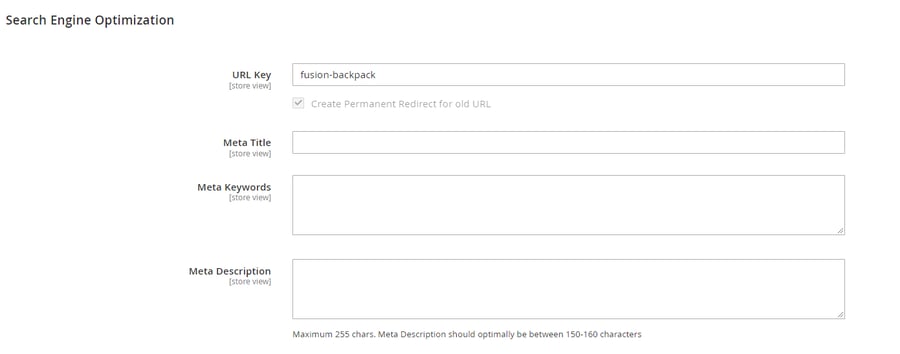
Maintain out-of-stock product page
For an eCommerce site, it's difficult to keep all the products in the available states, especially with the brand's best-selling items.
Typically, these kinds of products can generate a tremendous amount of traffic to an e-store thanks to different sales and promotion techniques. So there is a high possibility that your rankings will be affected due to the unavailability of the store's inventory.
Here are some ways to help you keep the SEO power your pages have built up over time:
- Use internal links to promote and redirect customers to similar product pages (for instance, the latest model or different variations of that item)
- Ask customers to subscribe to receiving emails when your products are back in stock
Apart from keeping the page of out-of-stock product live, internal links can be optimized to make it easier for search engines to crawl your site and understand its hierarchical structure.

In terms of technical aspects, Magento 2 store owners can set up internal links through two steps:
- In the Magento 2 Admin account, select Catalog > Products. Then click on the wanted item to open its Edit settings
- Scroll down to the Related Products, Up-Sells, and Cross-Sells section
Once there, merchants can set suitable recommendations for each item on the site and better improve the customers' shopping experience via simplified navigation.
Implement schema markup (rich snippet)
For those who are new to the definition of schema markup, it's a type of microdata displayed on SERPs that facilitates the organization of the site's information for search engines. 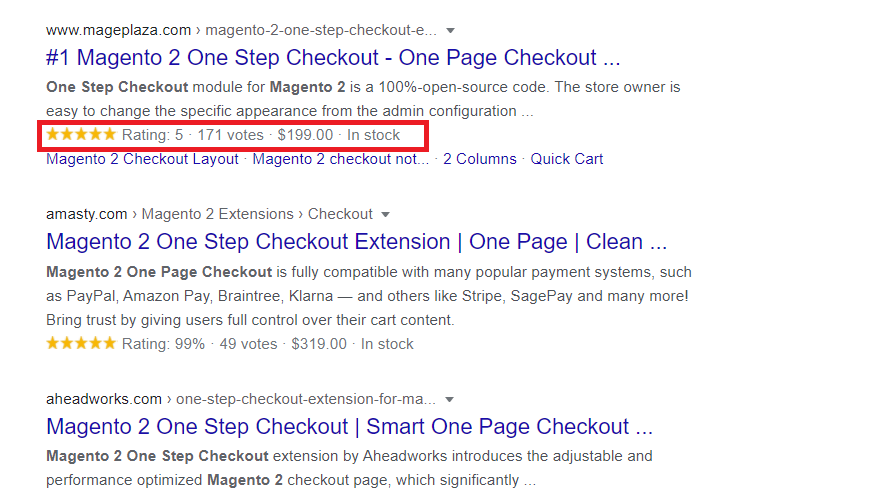
In other words, merchants can showcase more information about specific products in the prospects' search result pages, including:
- Pricing
- Star ratings
- Reviews
- Short description
- Availability
Your site's appearance on SERPs will become more attractive to customers with schema markup support. The implementation of schema markup (rich snippet) has a massive impact on your store's visibility in search engine results and reduces traffic loss as well.
Magento 2 store merchants can implement rich snippets without complicated settings via an extension for better SEO performance.
Website loading speed
Some facts and statistics reflecting customers' action towards a site' loading speed:
- 47% of modern consumers expect the loading time for a site to be 2 seconds or less
- 40% of consumers tend to leave a website if it doesn't load within 3 seconds
- 73% of mobile Internet users admit to encountering a web with the slow loading speed
Apparently, page loading time has become more and more essential as a search engine ranking factor, making it a crucial SEO element. Especially when Google evaluates low loading sites are not preferable.
Choose the right hosting provider
When you realize your site's load speed is too slow, and SEO strategy doesn't work, it might be time to consider finding a better Magento hosting provider.
You should prioritize the web host that offers hosting packages optimized for Magento's infrastructure to have better SEO performance than a generic hosting solution.
Use Content Delivery Network (CDN)
Content delivery network (or, content distribution network functions) is a geographically distributed network used to distribute the load of delivering content to the end-users in the shortest possible time.
The CDN service can significantly boost your website content's load speeds, enhancing customers' browsing experience on your e-store. You can also find various CDN options available in the market, both free and paid versions.
Utilize browser caching
In essence, browser caching is a web browser's ability to store files on the user's device. And those files will be loaded immediately from there the next time people visit your pages.
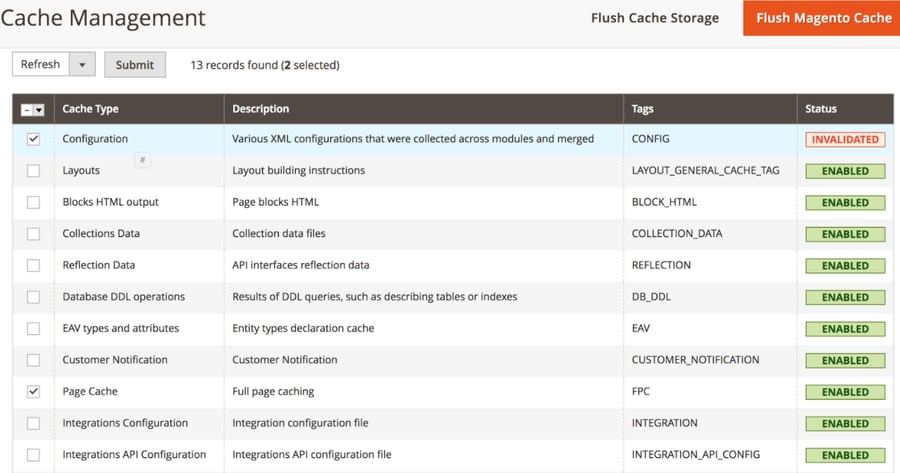
This method allows merchants to improve the site's load speeds by eliminating the need to redownload this data while visitors return to your site. Magento supports caching out of the box. You can start using it by going to System > Cache Management and enabling every type of cache listed.

Merge and minify JavaScript and CSS files
The last tactic on this list is the minification of Javascript and CSS files. Each time a person loads a site, all the image files, CSS and Java files of that website are loaded as well, taking up a lot of page load time.
Therefore, by merging the Javascript and CSS files, store owners can reduce the on-site page load time on subsequent requests.
Meanwhile, implementing the minification allows merchants to remove unnecessary information from the site's code (Javascript and CSS) while the functionality doesn't change.
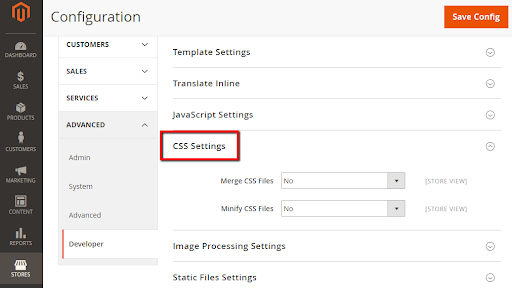
Magento 2 has a built-in feature that allows you to minify and merge JS and CSS files with the following settings:
- Go to Stores > Configuration > Advanced > Developer and make sure your settings are as follows
- In the JavaScript settings, choose Merge JavaScript Files/ Enable JavaScript Bundling/ Minify JavaScript Files = Yes
- In the CSS settings, select Merge CSS Files/ Minify CSS Files = Yes
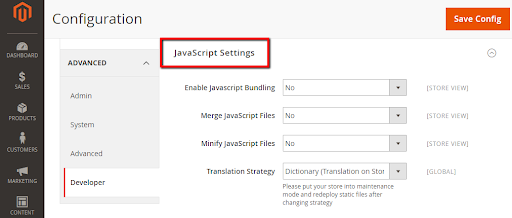
Other essential SEO techniques
Here are some other SEO techniques you should know to improve the rank of your Magento store on the search engine:
- Optimize the store's URLs for SEO
- Set up an XML sitemap
- Create backlinks to your site
- Mobile responsiveness
- Incorporate customer reviews into your website
- Integrate social media on product pages
Time to apply your knowledge!
Magento 2 is, for sure, an extremely SEO-friendly platform. However, the integration with optimized SEO extensions and specific tactics will help eCommerce businesses improve their search engine visibility.
Since the SEO performance is enhanced, the opportunity to increase your site's rankings is within reach; and as a result, driving an incredible amount of traffic to your website.
Next Read: Shopify Plus vs. Magento Commerce 2: Which Is Better in 2021?
Read also about the best SEO optimization practices in the automotive industry.